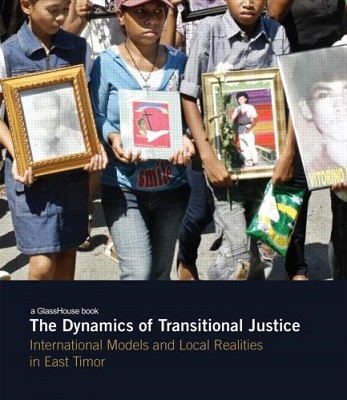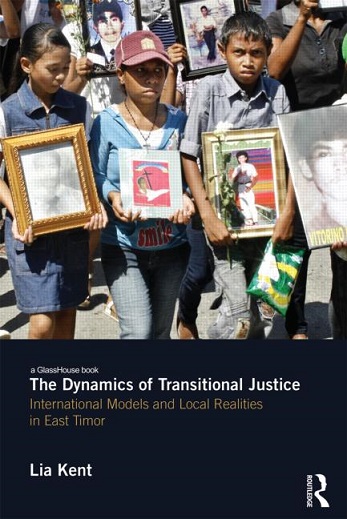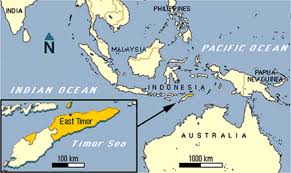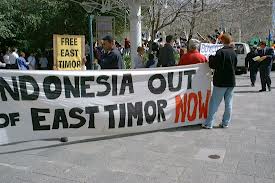By: Vanessa Hearman
Since East Timor voted for independence from Indonesian rule in 1999, the country has wrestled with the best ways to account for past human rights abuses, in particular those that occurred during the Indonesian occupation from 1975 to 1999. In 1999 alone, over 1000 people died in the lead up to and following the UN-sponsored referendum to separate from Indonesia.
Approximately 400,000 people were displaced. East Timor’s experiments with trials and tribunals, the Truth, Reception and Reconciliation Commission (Comissão de Acolhimento, Verdade e Reconciliação, CAVR) and other commissions are in line with the promotion of ‘transitional justice’ mechanisms globally. In the past three decades, there have been 40 international courts and tribunals and more than 35 truth commissions around the world. These are the most popular forms of ‘transitional justice’
instruments. Coming to terms with the past however entails balancing political interests and deciding how to deal with abuses in ways that deliver justice and the ability for society to move on.
Lia Kent’s study of the interaction between the ‘international models and local realities’ in East Timor is an outstanding work that benefits from the writer’s in-depth knowledge of East Timor and her familiarity with the voluminous scholarship on transitional justice. This is an important addition to the field of transitional justice and Timorese studies.
A universal toolkit to truth and reconciliation?
Kent shows how prosecutions and truth commissions have become part of the toolkit promoted by international organisations and states to deal with past human rights abuses. Beyond the criticisms specific to these instruments that other scholars have provided, Kent goes further to argue that these instruments support the promotion of liberal values of the importance of individual rights and liberties. In some settings, such a focus on individual rights are at odds with local perceptions of justice, which might view justice as a broader social good.
The toolkit approach suggests that if followed closely, this model will promote the rule of law and democracy and achieve peace and stability. Kent questions if this is borne out in reality. In addition, she critiques approaches to transitional justice which suggest that there is both a clear starting point and also an end point, when victims are deemed to have received justice. While these clear-cut timelines might suit funding cycles and donor expectations, her field research in several parts of East Timor shows that justice occurs across a longer timespan and is based on locally embedded ‘conversations’.
Concepts of transitional justice promoted by international actors such as the UN and donor countries are, Kent argues, translated – ‘vernacularised’ – into local settings. In East Timor the victims’ groups that have sprung up in the absence of government action and an international tribunal take on board the globalised discourse on accounting for past rights abuses and apply the concepts to their campaigning and advocacy.
East Timor’s journey so far
For those seeking a systematic charting of East Timor’s transitional justice experiments, Kent’s book is a must-read. The Serious Crimes Process, a series of criminal prosecutions, falls under the umbrella of ‘retributive justice’. When the process was wound up in 2005, 95 indictments were brought against 391 individuals and 84 defendants had been convicted. However Indonesia’s refusal to cooperate with Serious Crimes prosecutors, particularly in the indictment of Indonesian military officers hindered the process’ ability to prosecute more than just low-ranking members of the Timorese militias. Kent details other obstacles in the Serious Crimes Process, including the lack of resources and the prioritisation of cases that occurred in 1999 above others. She also discusses the work of the CAVR, which while having a broader mandate than the Serious Crimes Process was still constrained by a lack of resources and temporal limitations on its mandate.
Kent’s work is underpinned by the conviction that a good ‘model’ of transitional justice must include strategies for addressing structural injustice.
“Legacies of past violence in East Timor, such as poverty and marginalisation, arose from the long years of occupation and conflict.”
In this study, she brings this point out most effectively by relying on the voices of the victims, whose lives are marred by a lack of education and jobs as a result of having lost family members in the conflict. Kent also raises the claims made by others that the 2006 conflict in East Timor which began in the Armed Forces but then spilt into broader society, was related to social trauma and unmet needs. This is in-line with the contention that unmet demands for justice will lead to further conflict. The quest for justice, Kent argues, is therefore complicated by, and can feed into, post-independence power struggles.
Addressing the long-term needs of victims is an enormous challenge for any government, let alone one that has been left to rebuild a country physically destroyed by the Indonesian military and its militias. Debates about the desirability or otherwise of an international tribunal and the need to emphasise nation-building rhetoric instead have preoccupied Timorese leaders since 1999.
Kent examines the motives behind the attitudes held by the main leaders such as Xanana Gusmao, Jose Ramos Horta and Mari Alkatiri and ultimately their acceptance of bodies like the Commission for Truth and Friendship (CTF), a body set up by the Indonesian and Timorese governments almost to rival the work of the CAVR. In order to understand the repudiation by Timorese leaders of retributive justice models, the discussion in this book of the Timorese leadership’s narratives on reconciliation and the importance of forgiveness is very important.
Kent shows how the frustration of the Timorese people with their leaders’ inaction has led to their increased organisation and mobilisation. Victims’ groups and local memorialisation practices have arisen and with them a ‘vernacularisation’ or the translation of international discourse and practice on transitional justice into local contexts, thereby imbuing them with new, local meanings. Through interviews with those involved in groups such as Mate Restu and Rate Laek, Kent gives voice to the ways victims see their situation and their wishes for the future.
Nonetheless, she also points out how their reliance on NGOs to keep the groups going financially and morally raises questions about the extent to which victims’ groups are self-sustaining. The competition over who can call themselves victims has given rise to a victimhood hierarchy dominated by male Falintil veterans, to the detriment of youth in the clandestine movement and women. It
may be due to my own work relying heavily on oral history, but many times I wish that Kent would include more of her interviewees’ words throughout this book. Wherever these voices are incorporated, they add much poignancy to this study, highlighting that transitional justice is ultimately about people and meeting their needs beyond the violence, grief and trauma.
This sensitive, highly nuanced and considered study of transitional justice in East Timor is also useful for scholars and activists working on similar issues in Indonesia and other parts of the world.
Vannessa Hearman (vannessa.hearman@sydney.edu.au) is a lecturer in Indonesian Studies at the University of Sydney. She worked as an interpreter in East Timor during the UN administration (2000-2002) and completed a Masters thesis at the University of Melbourne about post-conflict reconstruction in East Timor. Her current research is related to responses to human rights abuses that occurred under the Suharto regime in Indonesia. Courtesy Inside Indonesia














